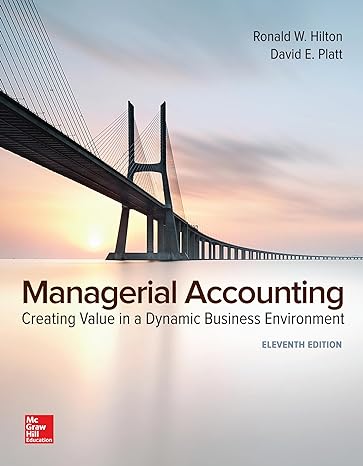Lafayette Company manufactures two products out of a joint process: Compod and Ultrasene. The joint costs incurred
Question:
Lafayette Company manufactures two products out of a joint process: Compod and Ultrasene. The joint costs incurred are $250,000 for a standard production run that generates 120,000 gallons of Compod and 80,000 gallons of Ultrasene. Compod sells for $2.00 per gallon while Ultrasene sells for $3.25 per gallon.
Required:
1. If there are no additional processing costs incurred after the split-off point, calculate the amount of joint cost of each production run allocated to Compod on a physical-units basis.
2. If there are no additional processing costs incurred after the split-off point, calculate the amount of joint cost of each production run allocated to Ultrasene on a relative-sales-value basis.
3. Suppose the following additional processing costs are required beyond the split-off point in order to obtain Compod and Ultrasene: $.10 per gallon for Compod and $1.10 per gallon for Ultrasene.
a. Calculate the amount of joint cost of each production run allocated to Ultrasene on a physicalunits basis.
b. Calculate the amount of joint cost of each production run allocated to Compod on a netrealizable-
value basis.
4. Assuming the same data as in requirement (3), suppose Compod can be processed further into a product called Compodalene, at an additional cost of $.40 per gallon. Compodalene will be sold for $2.60 per gallon by independent distributors. The distributors’ commission will be 10% of the sales price. Should Lafayette sell Compod or Compodalene?
5. Independent of your answer to requirement (4), suppose Christine Dalton, the assistant controller, has completed an analysis showing that Compod should not be processed further into Compodalene.
Before presenting her analysis to top management, however, she got a visit from Jack Turner, Lafayette’s director of research. Turner was upset upon learning that Compodalene, a product he had personally developed, would not be manufactured.
Turner: “The company’s making a big mistake if it passes up this opportunity. Compodalene will be a big seller and get us into new markets.”
Dalton: “But the analysis shows that we’d be losing money on every gallon of Compod that we process further.”
Turner: “I know, Christine, but that’s a temporary problem. Eventually, we’ll bring down the cost of making Compodalene.”
Dalton: “Can you find me some estimates on the cost reduction you expect?”
Turner: “I don’t have a crystal ball, Christine. Look, if you could just fudge the numbers a little bit to help me get approval to produce some Compodalene, I can get this product off the ground. I know the cost reduction will come.”
Comment on the ethical issues in this scenario. What should Christine Dalton do?
6. Assume the same data as given in requirements (3) and (4). The industrial chemical industry has experienced a downturn, which has left Lafayette with idle capacity. Suppose Lafayette can sell only half of the Compod made in each production run, but the remainder could be sold as Compodalene.
Should Lafayette process the remaining Compod into Compodalene?
Step by Step Answer:

Managerial Accounting Creating Value In A Dynamic Business Environment
ISBN: 9781259569562
11th Edition
Authors: Ronald W.Helton, David E. Platt





